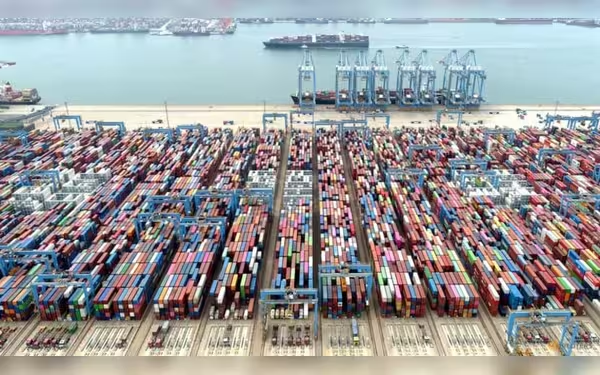Monday, November 25, 2024 04:18 AM
Southeast Asia Faces Economic Challenges Amid Trump's Trade Policies
- Southeast Asia's exports to the US hit US$143 billion in 2024.
- Trump's tariffs could disrupt trade surpluses for Vietnam, Thailand, and Malaysia.
- Local manufacturers face threats from subsidized Chinese imports.
 Image Credits: channelnewsasia
Image Credits: channelnewsasiaSoutheast Asia braces for economic challenges as Trump's trade policies threaten exports and local manufacturers.
As the political landscape in the United States shifts with Donald Trump’s anticipated return to the White House, Southeast Asia finds itself on the brink of a significant economic challenge. The region, which has seen its exports to the US soar to an impressive US$143 billion in the first half of 2024, is now preparing for the potential fallout from a new wave of tariffs. This development comes at a time when Southeast Asia has overtaken China in terms of shipments to the US, making the stakes even higher for countries like Vietnam, Thailand, and Malaysia.
Trump's trade policy is characterized by a strong emphasis on imposing tariffs, which he believes will not only serve as a powerful negotiating tool but also help rejuvenate American manufacturing. His recent appointment of Howard Lutnick, a known advocate for tough trade measures, as commerce secretary signals a clear intention to pursue aggressive tariff strategies. During his campaign, Trump proposed tariffs of up to 20 percent on all imports and a staggering 60 percent or more on Chinese goods. Such measures could effectively shut many Chinese exports out of the US market, creating a ripple effect that Southeast Asian economies must now navigate.
For countries like Vietnam, Thailand, and Malaysia, the implications of these tariffs are profound. These nations currently export more to the US than they import, resulting in significant trade surpluses. However, the introduction of tariffs could raise the cost of their exports, making them less appealing to American consumers. To maintain their foothold in the critical US market, these countries may be forced to increase their imports of American goods while simultaneously curtailing their exports. This balancing act could lead to short-term disruptions, with economists predicting a potential cut in regional growth by up to 0.5 percentage points in 2025.
Moreover, the situation is further complicated by the fact that Chinese exports, which may be shut out of the US market, will need to find new destinations. While this could initially benefit consumers in Southeast Asia by providing access to cheaper goods, local manufacturers are already grappling with the challenges posed by Chinese industrial overcapacity. For instance, Thailand has witnessed over 2,000 factory closures this year alone, largely due to an influx of inexpensive Chinese steel and other products. Similarly, Indonesia's textile sector has suffered significant job losses, with tens of thousands of positions disappearing in just six months.
As Southeast Asian nations brace for the impact of Trump's trade policies, the overarching question remains: how will they adapt to these new economic realities? The potential for subsidized Chinese imports to flood the region poses a serious threat to local manufacturers, who are already struggling to remain competitive. If tariffs restrict access to American buyers, the challenges faced by these economies could deepen, leading to a more complex and precarious economic landscape.
The return of Trump to the White House heralds a new era of trade tensions that Southeast Asia must navigate with caution. The region's ability to adapt to these changes will be crucial in determining its economic future. As countries seek to balance their trade relationships and maintain competitiveness, the coming months will be pivotal in shaping the trajectory of Southeast Asia's economic landscape. The resilience and innovation of these nations will be tested, and their responses will undoubtedly have lasting implications for their economies and the global trade environment.













